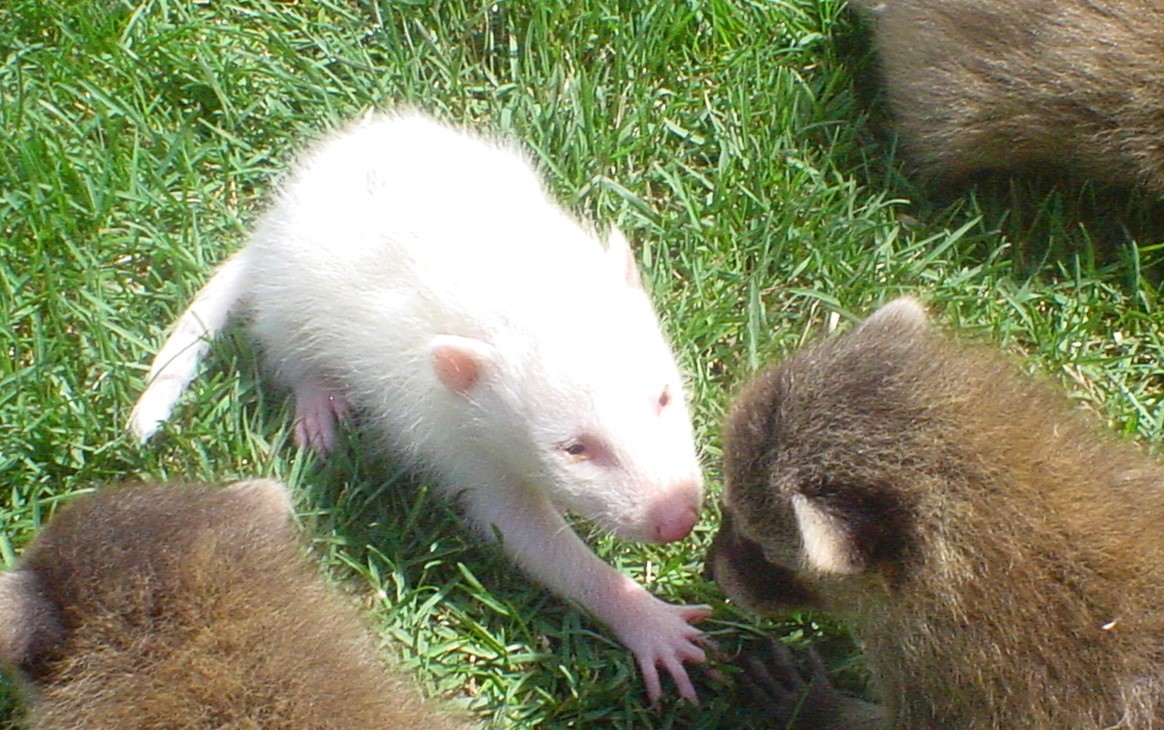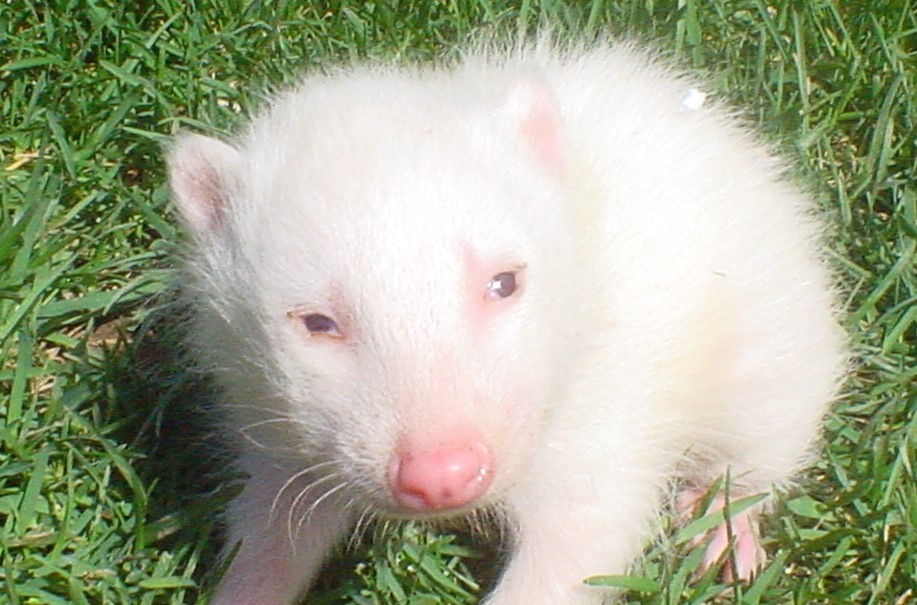Rarity
The odds of seeing an albino raccoon are about one in 750,000. For those familiar with the statistics, you have a better chance of being struck by lightning. Only about one in every 10,000 to 20,000 raccoons is born with an albino mutation, so these low odds are not that surprising.Size
Other than their colouring, albino raccoons are the same as any other raccoon. If they live to full maturity, they will be between 23 and 37 inches and weigh somewhere below 23 lbs. However, albino raccoons often have other health issues because of the genetic mutations in their systems.
Lifespan
While an average raccoon can live to be around three years old in the wild, most albinos are not so lucky. Many of the white-pigmented raccoons won't live past their first year of life because of health complications or because they fall victim to a predator. The white fur, lack of camouflage, and pink nose and eyes make it difficult for albino raccoons to hide.Maturity
As with any other raccoon, albinos remain in their den until they are between seven and 16 weeks, at which point they begin to leave the nest. At around 12 weeks, they are completely weaned from their mothers and start foraging. By the time a raccoon, even an albino, is a year old, it is entirely independent.Habits
All raccoons are nocturnal animals, so it is rare to see them out during the day. They are also unusually clean creatures. If you watch them closely, you will find that many raccoons, including albinos, wash their food and dig latrines. They are incredibly shy and try to avoid confrontation, but they can be aggressive if cornered.Habitat
For many animals, climate and region are essential to their survival, but raccoons are extremely adaptable creatures. You will find these animals in many environments across North and Central America, Europe, and Japan. This species makes dens or homes in trees, caves, barns, vehicles, or other human-made structures. Albino raccoons, in particular, need to find secure areas where they can hide well from predators.





